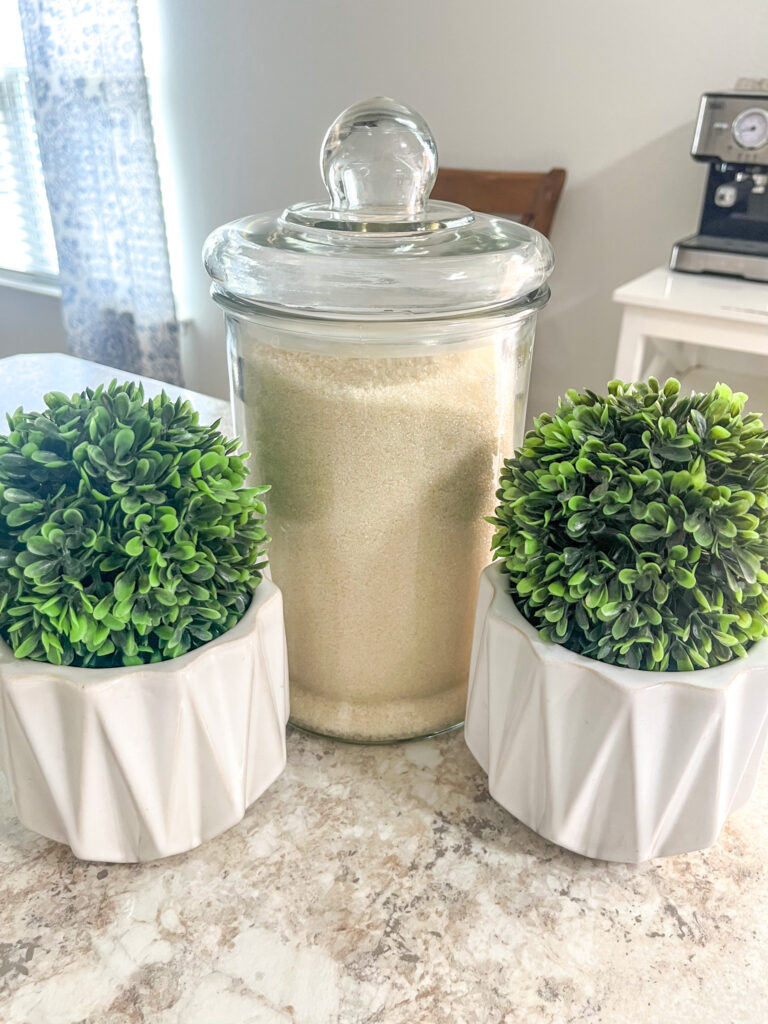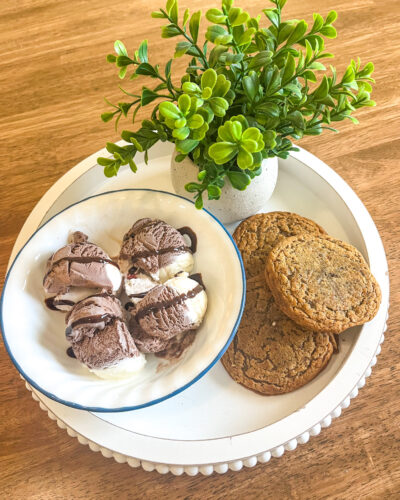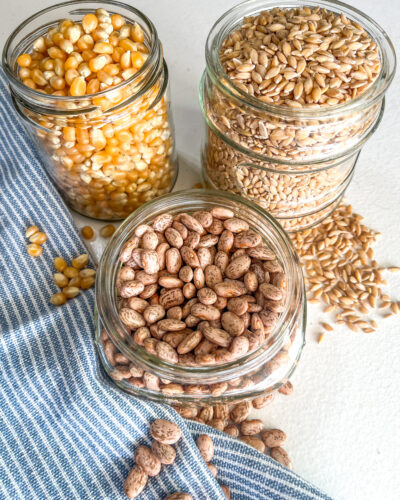
Historically, most sugar was made from sugarcane plants. Most of the sugar in the United States now comes from sugar beets because it is cheaper to grow sugar beets. Sugar in some form or another is in most packaged foods. Over the last hundred years, consumption has gone through the roof!
How Much Sugar Do We Eat?
According to the U.S. Department of Agriculture, the average American consumes more than 100 pounds of sugar annually. Yes, you read that right, 100 pounds!!!
The average consumption was 4 pounds in the 1700s and 22 pounds in the 1800s. (Dental Care of Glen Ellyn)
Back in the 1700s and 1800s, sugar was expensive. Only the wealthy could afford to buy it. Wikipedia says this changed in 1876 when the United States signed the Reciprocity Treaty of 1875 with Hawaii. Through this treaty, the United States market gained free access to goods grown in Hawaii. Guess which crop is prevalent in Hawaii? Sugar beets!
Health Risks of Sugar
GMOs/ Glyphosate
Both sugar beets and sugarcane have been genetically modified to resist glyphosate. The crops are sprayed with glyphosate several times during the growing process. This is a problem because glyphosate is a known carcinogen.
The Gut
Sugar causes the bad microbes in our gut to multiply and decreases the good microbes in our gut. This can lead to dysbiosis, inflammation, and intestinal permeability (leaky gut). Leaky gut can cause food sensitives, food allergies, and other health problems. Limiting the sugar we eat is crucial for good gut health. (PubMed Central)
The Liver
Table sugar is about half fructose and half glucose. As I mentioned in “The Spill on High Fructose Corn Syrup”, your liver is the only organ in your body with the ability to process fructose. But it can only handle less than 50 grams a day. (PubMed Central)
If you consistently eat more than 50 grams a day of fructose, you can overwhelm your liver. According to PubMed Central, this could lead to non-alcoholic fatty liver disease and other health problems.
Insulin Resistance/Type 2 Diabetes
When you eat sugar, your pancreas produces insulin which helps your body break down the glucose molecules. Some glucose molecules travel to the liver and convert into glycogen. The rest are absorbed by the cells in your body to help your blood glucose go down. Some glucose molecules will go to muscle cells and be used as energy. (Wikipedia) However, if there are excess molecules, they will be stored in cells as fat.
Our body is good at keeping our blood glucose levels steady. However, our modern food is chock full of sugar. Things that don’t even need it like ketchup, salad dressings, and other condiments have sugar added. If you constantly spike your blood glucose, your cells become tired, less sensitive to insulin, and won’t respond to insulin’s command to store glucose. According to Wikipedia, when this happens, the excess glucose stays in the bloodstream and your blood glucose remains high. This leads to type 2 diabetes.
How to Avoid Spiking Your Blood Glucose
I don’t want to spike my blood glucose constantly and wear down my cells, but I still want to be able to eat dessert and other carbs in moderation. How can I accomplish this?
1. Keep your sugar intake to less than 50 grams a day.
This is harder than it sounds because sugar is everywhere! It’s in our bread, snacks, coffee creamer, and even deli meat! Keep track of how much you are eating throughout the day and try to find ways to limit it.
2. Eat your sugar, don’t drink it.
It’s super easy to down a lot of sugar when you are drinking sweet drinks. For example, eight ounces of grape juice has around 37 grams of sugar, 37!!! Most fruit juice is unhealthy. It is better to eat a piece of fruit since it has fiber and that slows down the digestion of the fructose in your body.
When you drink anything sweet, the sugar goes directly into your bloodstream. It’s like having a sugar IV! This causes a bigger glucose spike than eating sugary foods. When you eat sugary foods, your body must digest the food before the sugar is released, which slows down the process.
3. Eat protein with carbohydrates
A study was conducted at a university in Istanbul, Turkey. The participants were given either straight carbohydrates or carbohydrates with protein. The participants who only ate carbohydrates had significantly higher blood glucose 60 minutes after the meal compared to those who ate carbohydrates with protein. (PubMed Central) Eating carbs, proteins, and fat at every meal is important. Learning to track your macronutrients is a great tool in managing blood glucose.
4. Physical activity after eating sugar or carbohydrates
Several studies have found that walking after meals, even short walks of 15 minutes, significantly reduces blood glucose spikes. If you can’t walk after a meal, stand and do other light activities like cleaning the kitchen. This may not be as effective as walking after a meal, but it will still help your blood glucose go down. (Springer Nature Link) The main thing to remember is not to sit down right after a meal.
Are There Healthier Alternatives?
*Artificial Sweeteners (aspartame, saccharin, acesulfame potassium, sucralose, neotame, and advantage)*
These sweeteners are made from chemicals in labs. This fact immediately throws up a red flag for me. According to PubMed, numerous studies have been done which show that these artificial sweeteners can cause damage to the microbiome, stomach issues, allergic reactions, increased insulin levels, and negative effects on the heart. I would suggest avoiding artificial sweeteners in your diet.
*Erythritol, Xylitol, Stevia, and Monk Fruit*
These sweeteners are derived from plants, which is better than being produced from chemicals in a lab. Let’s take a closer look at each.
Large amounts of erythritol and xylitol in the blood have been linked to blood clot formation. Researchers tested human platelets with both erythritol and xylitol. Both times they found that adding these substances to blood platelets made them more sensitive to blood clotting signals. (National Institutes of Health) Also, erythritol and xylitol can cause stomach upset in large amounts.
Stevia and monk fruit can also cause stomach upset, but both are safe options. I am not a fan of Stevia’s aftertaste, so I don’t personally use it. I don’t buy monk fruit sweetener because of the price tag, but it is a good option if you are looking to lower your blood glucose.
*Agave Syrup and Allulose*
Agave syrup is very high in fructose. Again, the liver is the only organ in our body that processes fructose. You may overload your liver with fructose by eating large amounts of agave syrup.
Allulose is a new sugar substitute on the market. It is known to cause stomach upset in large quantities. Not a lot of testing has been done on this sugar substitute. I personally have not tried it.
*Coconut Sugar, Honey, Maple Syrup*
Coconut sugar, honey, and maple syrup all have a slightly lower glycemic index than table sugar. However, they all raise your blood glucose. Maybe slightly less than table sugar, but it’s still a spike. Honey and maple syrup have the added benefit of extra minerals. But when you heat honey, the extra minerals are lost. I like using maple syrup or honey to add sweetness to oatmeal or plain Greek yogurt.
What to Do?
Limit sugar to less than 50 grams a day. Avoid artificial sweeteners, erythritol, and xylitol. When you want to enjoy a treat, choose the sweetener you like best. I like using organic sugar in my homemade desserts. After you eat carbs or a sweet treat, go for a short walk. If that is not possible, do some light physical activity while standing. Often I will clean the kitchen and sweep the floor right after eating a meal. Avoid sitting still after eating.



[…] The Scoop on Sugar- How to Enjoy Sugar in a Healthy Way. […]